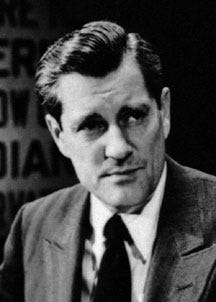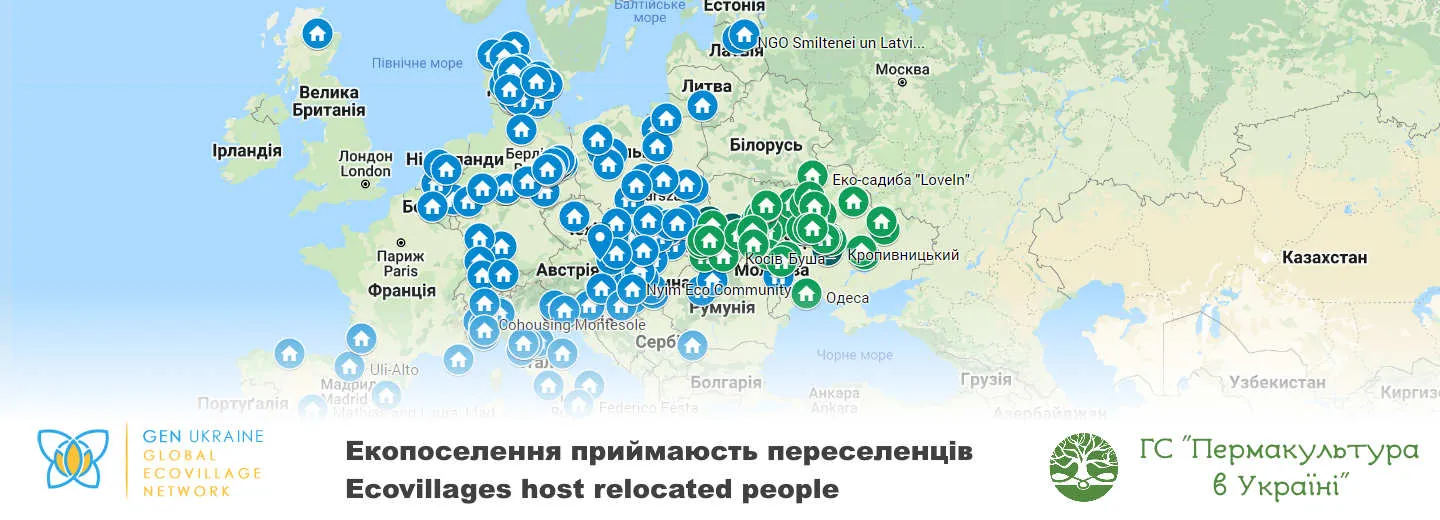Sevareid's Law: A Neo-Luddite Manifesto
"The chief cause of problems is solutions"
Eric Sevareid was an American author, journalist and TV anchorman from 1939 to 1977, rightfully lauded with Emmy and Peabody Awards. J. Edgar Hoover thought he was a communist because he was an anti-ROTC protester in high school, anti-fascist during the Spanish Civil War, and helped raise funds to support Hollywood celebrities appearing before the House Committee on Un-American Activities in 1947. That painted him pink enough to earn an FBI tail.
One of the quotes most associated with him is now called Sevareid’s Law: “The chief cause of problems is solutions.” (CBS Evening News, December 29, 1970)
This comes up in discussions crossing many subjects — military responses to aggression, population control and reversing climate change.
Many people who think of themselves as scientists or critical thinkers identify the criticality and utility of the scientific method and take that as their lodestone. They neglect the limits science imposes upon itself by being necessarily reductive and compartmentalized. Its outer boundaries of inquiry are smaller than its problem space.
Charles Kettering famously said that a problem fully understood is half solved. The corollary to that is, unfortunately, that a problem not understood is actually unsolvable.
It is ironic that as the discussion of human potential and holistic health has evolved to trying to see ourselves as full humans in rich relationships with our micro- and macro-biomes, even using holistic sense-making, we still limit problem definitions and problem solving to narrow specificity. We’ve become wind-tunnel modelers and paper clip maximizers.
This deficiency becomes catastrophic when we attempt to grapple with existential challenges such as climate change or nuclear disarmament. The way we solve problems almost inevitably causes additional problems that usually leave us worse off than where we began.
If we define a problem in a narrow way our solution to that narrow problem can end up harming something outside the frame. We solve for energy by building nukes but not for cancers and birth defects that will occur for hundreds of generations after they are mothballed. We see the cut-off of oil supplies from Russia raising prices at the pump, but rather than scale down private cars or switch to mass transit, we raise domestic oil production and rush to take sanctions off Venezuela. That screws the environment by accelerating climate change. It pads the wallets of fracked gas and shale oil investors, widening income disparity and the class cold war. It postpones decarbonization, giving the fossil industries another big win. It places Venezuela, a Bush-era Russia-collapse test case, back into the cross-hairs of geopolitics and further reduces their sovereignty.
The war in Ukraine is not the reason the US consumes 20 million barrels of oil per day and the EU consumes 15. Overconsumption is not fixed by finding new sources of oil.
Daniel Schmachtenberger, in a podcasted interview, said:
In any problem-solving process, you have to say, “Do we understand the etiology of the problem and the problem embedding landscape?” meaning not just this problem and those sets of metrics, but the other things it’s connected to, well enough that our solution is addressing what caused the problem. [You are] addressing the intrinsics of the problem and not externalizing harm to adjacent things and so on. And you’ve got to separate there is a kind of first second-person part of that and a third-person part — what are the things we value that we care about that can’t be measured? And then maybe we can measure things that correlate but it’s ultimately a value [judgment]. And then, “What is the third person sense-making about what is actually happening,” and [what is] the forecasting of what would be the effect of a particular action?
And so there’s different epistemologies that you apply to kind of third-person sense-making to forecasting and to second-person values generation, and so we have to take the partial sense-making that lots of people have and lots of groups have and be able to vet it to verify faults and then synthesize. And then we also do values generation that way — “Okay, so you’re mainly focused on the environment, you’re mainly focused on the economy, you’re mainly focused on national security; why does that thing matter? Okay. now let’s separate your desire for national security from your strategy because your strategy requires the environment. Let’s separate your value on the environment from your [national security] strategy because it involves the economy.”
Let’s just say we care about the environment. What are the key things that have to be paid attention to? … maybe there’s some assumptions that we can get rid of … because you weren’t looking at the rest of it. But if we put all those values together and then say is there is a better synergistic satisfier that addresses all of those values, one that’s a really key part that is radically under-addressed in most any kind of system of governance. And that can be decomposed so we can do it in parts but then recompose with thought on holism. But now that needs people that are oriented to that plus it also needs systems that are capable of doing that. Who’s going to build the systems and people that understand them? Which is why it has to start with people and … culture first.
The way to introduce engineering minds to quantum entanglement with vanishingly multidimensional and sublimely interconnected ecosystems is not to simplify and further narrow problems definitions — admit it, we all do that — but to introduce greater levels complexity, such as with 12 metrics for each of 17 goals, or some such, which is what is now being called ESG (ecological, social, and governance) auditing. It’s a start, I suppose.
Or, we could just read up on Crazy Horse, Kondiaronk and Quanah Parker and grasp how they viewed the human relationship to the natural world. The Autobiography of Ma-Ka-Tai-Me-She-Kia-Kiak, or Black Hawk, Embracing the Traditions of his Nation was published in 1833, five years before the author expired at age 70 or 71. Among the stories the great Sauk chief related was how his people had lived in the Mississippi Valley in the centuries before Europeans arrived.
Many of the indigenous peoples in North America had built model societies, not all identical, some with features we might find abhorrent and others we might value. Their ultimate proof of fitness was that they sustained not only the two-leggeds but soils, forests, lakes, rivers and bounteous biodiversity.
Black Hawk describes Rock Island as “the best island on the Mississippi” and for a long time the resort of young people during the summer — sort of like summer camp. “It was our garden (like the white people have near to their big villages),” he wrote, “which supplied us with strawberries, blackberries, gooseberries, plums, apples, and nuts of different kinds; and its waters supplied us with fine fish, being situated in the rapids of the river. In my early life, I spent many happy days on this island.”
Today that island is buried under the concrete blanket of Moline, Illinois.
The Sauk shared mile-long cornfields running parallel along the river with their neighbors, the Foxes. Both groups pastured their horses on the rich bluegrass waving in the wind on an uncultivated prairie.
We always had plenty — our children never cried with hunger, nor our people were ever in want. Here our village had stood for more than a hundred years, during all which time we were the undisputed possessors of the valley of the Mississippi, from the Ouisconsin to the Portage des Sioux, near the mouth of the Missouri, being about seven hundred miles in length.
In season the Sauk would move to a winter village, packing up their portable homes and moving all their goods and possessions on horse travois. They would hunt and trap and return to their summer village loaded with furs to trade. The scale of their population was in balance with the regenerative capacities of the land they occupied. It was sustainable, but more importantly it was regenerative of all parts of the ecology of which it was a participant.
In the parlance of the engineer mind — or what Charles Mann termed “wizards” — the future lies not in Rock Island as it was, but in a futuristic, Blade Runner Moline designed by artificial intelligence. Setting aside the E and S aspects of that design, the G aspect (governance) demands that it be governed by behavioral control systems of complexity well beyond the mental acuity of the average citizen. We’ll need, say the wizards, the sort of AI intervention we’ve seen in social media advertising, updated to solve for bad behavior.
Hovering over this discussion is the ghost of Eric Sevareid.I make no secret that I favor Black Hawk’s utopia to the wizards’ dystopia. I would favor that even if it meant giving up the internet the way Japan gave up gunpowder and reverted to the sword from 1543 to 1879. I’d choose CI — collective intelligence — over AI.
Nature provides a pre-processed general intelligence that both individual and collective intelligence processes can access. It governs wisely from a deep dataset. Whether we unpack it, as some will, or stand back with a sense of reverence and awe, we should all feel safe within its bosom. Safer by far than trusting to the wisdom of technology-fetishistic apes who are no better equipped than crows, easily mesmerized by shiny objects.
__________________
Towns, villages and cities in the Ukraine are being bombed every day. As refugees pour out into the countryside, they must rest by day so they can travel by night. Ecovillages and permaculture farms have organized something like an underground railroad to shelter families fleeing the cities, either on a long-term basis or temporarily, as people wait for the best moments to cross the border to a safer place, or to return to their homes if that becomes possible. So far there are 62 sites in Ukraine and 265 around the region. They are calling their project “The Green Road.”The Green Road also wants to address the ongoing food crisis at the local level by helping people grow their own food, and they are raising money to acquire farm machinery, seed, and to erect greenhouses.
Those wishing to make a tax-deductible gift can do so through Global Village Institute by going to http://PayPal.me/greenroad2022 or by directing donations to greenroad@thefarm.org.
There is more info on the Global Village Institute website at https://www.gvix.org/greenroad
_______________________
The COVID-19 pandemic has destroyed lives, livelihoods, and economies. But it has not slowed down climate change, which presents an existential threat to all life, humans included. The warnings could not be stronger: temperatures and fires are breaking records, greenhouse gas levels keep climbing, sea level is rising, and natural disasters are upsizing.
As the world confronts the pandemic and emerges into recovery, there is growing recognition that the recovery must be a pathway to a new carbon economy, one that goes beyond zero emissions and runs the industrial carbon cycle backwards — taking CO2 from the atmosphere and ocean, turning it into coal and oil, and burying it in the ground. The triple bottom line of this new economy is antifragility, regeneration, and resilience.
Help me get my blog posted every week. All Patreon donations and Blogger or Substack subscriptions are needed and welcomed. You are how we make this happen. Your contributions are being made to Global Village Institute, a tax-deductible 501(c)(3) charity. PowerUp! donors on Patreon get an autographed book off each first press run. Please help if you can.
#RestorationGeneration #ReGeneration
“There are the good tipping points, the tipping points in public consciousness when it comes to addressing this crisis, and I think we are very close to that.”
— Climate Scientist Michael Mann, January 13, 2021.
Want to help make a difference while you shop in the Amazon app, at no extra cost to you? Simply follow the instructions below to select “Global Village Institute” as your charity and activate AmazonSmile in the app. They’ll donate a portion of your eligible purchases to us.
How it works:
1. Open the Amazon app on your phone
2. Select the main menu (=) & tap on “AmazonSmile” within Programs & Features
3. Select “Global Village Institute” as your charity
4. Follow the on-screen instructions to activate AmazonSmile in the mobile app







Comments